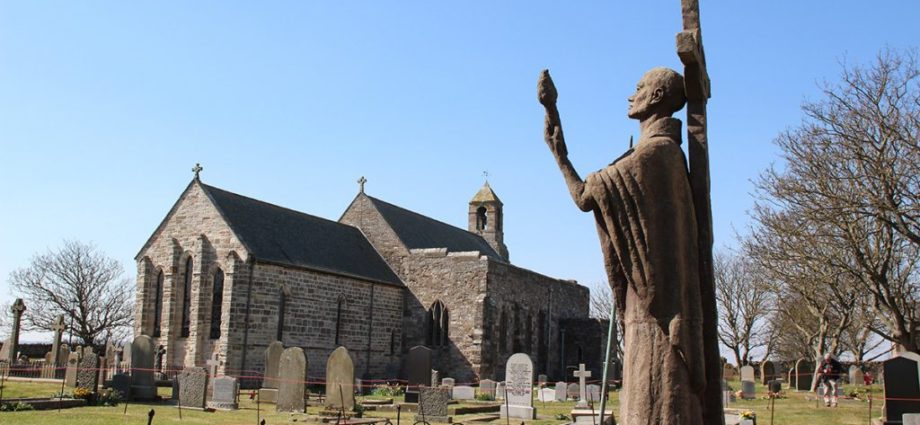ADVERTISEMENT
From this Saturday (17 September) onwards and until 3 December the world-famous Lindisfarne Gospels will be on show in the Laing Art Gallery in Newcastle. The Gospels, created by the monks on Holy Island some 1300 or so years ago, are our greatest cultural treasure to survive from Anglo-Saxon times. They also reveal much about the Golden Age of Northumbria, the kingdom that stretched from the Firth of Forth to the Humber, which lasted for some 300 years, and which was a centre of learning and of early Christianity.
Previous showings of the Gospels in the Laing – in 1996 and 2000 – have revealed just how much interest in the Gospels there is in the North East and how much pride is felt by the people of the region that such a national treasure was produced here so long ago. I well remember the long queues stretching way outside the gallery on those previous occasions and the atmosphere of excitement and anticipation.
A chequered history
The Gospels have had however a chequered and even turbulent history. After surviving Viking raids they went eventually, along with other relics of St Cuthbert, to Chester-le-Street and then on to Durham Cathedral. At around the time of the dissolution of the monasteries by Henry the Eighth they disappeared from the region in mysterious circumstances only to be bequeathed nearly two hundred years later to the nation as part of the collection of the antiquarian Sir Robert Cotton. They are now in the possession of the British Library and displayed in their Euston Road, London, premises.

Should the Lindisfarne Gospels be returned to the North East?
There have been many campaigns to return the Gospels permanently to the region – campaigns which, I own, I have enthusiastically supported. While these campaigns have not achieved their principal goal, the current situation whereby the British Library agrees to their return for a period every few years has been achieved thanks to continued pressure from within our region. The library has also produced very high-quality facsimiles which are on permanent display at various locations including on Holy Island itself.
If the Gospels were to return permanently where would they be housed?
Durham Cathedral is obviously a strong contender because of its close association with St Cuthbert and with the Venerable Bede. However, the Laing Art Gallery has also been very successful in attracting visitors to see the Gospels and Newcastle has excellent transport connections both within the region and beyond. Wherever they were they could, of course, remain the property of the British Library, by creating in effect an outpost of the British Library in the region that would be responsible for housing and conserving them. After all the Tate Gallery has established a presence in Liverpool as has the Victoria and Albert Museum in Dundee, so something similar (reinforcing a “levelling-up” message) could be set up here in the North East.

Meanwhile, let’s welcome the Gospels back wholeheartedly particularly in this special year for the North East where – let’s not forget – we are also celebrating the 1900th Anniversary of Hadrian’s Wall! As well as the main display at the Laing there will be many events and exhibitions relating to the Gospels as part of an “Inspired By” programme taking place at various venues in Northumberland, Tyne and Wear and Durham, details of which can be obtained from Tyne and Wear Archives and Museums (TWAM). Hope to see you there!
Joyce Quin – a member of House of Lords – is chair of Tyne and Wear Archives and Museums which includes the Laing Art Gallery.

We need your help! The press in our country is dominated by billionaire-owned media, many offshore and avoiding paying tax. We are a citizen journalism publication but still have significant costs. If you believe in what we do, please consider subscribing to the Bylines Gazette 🙏


